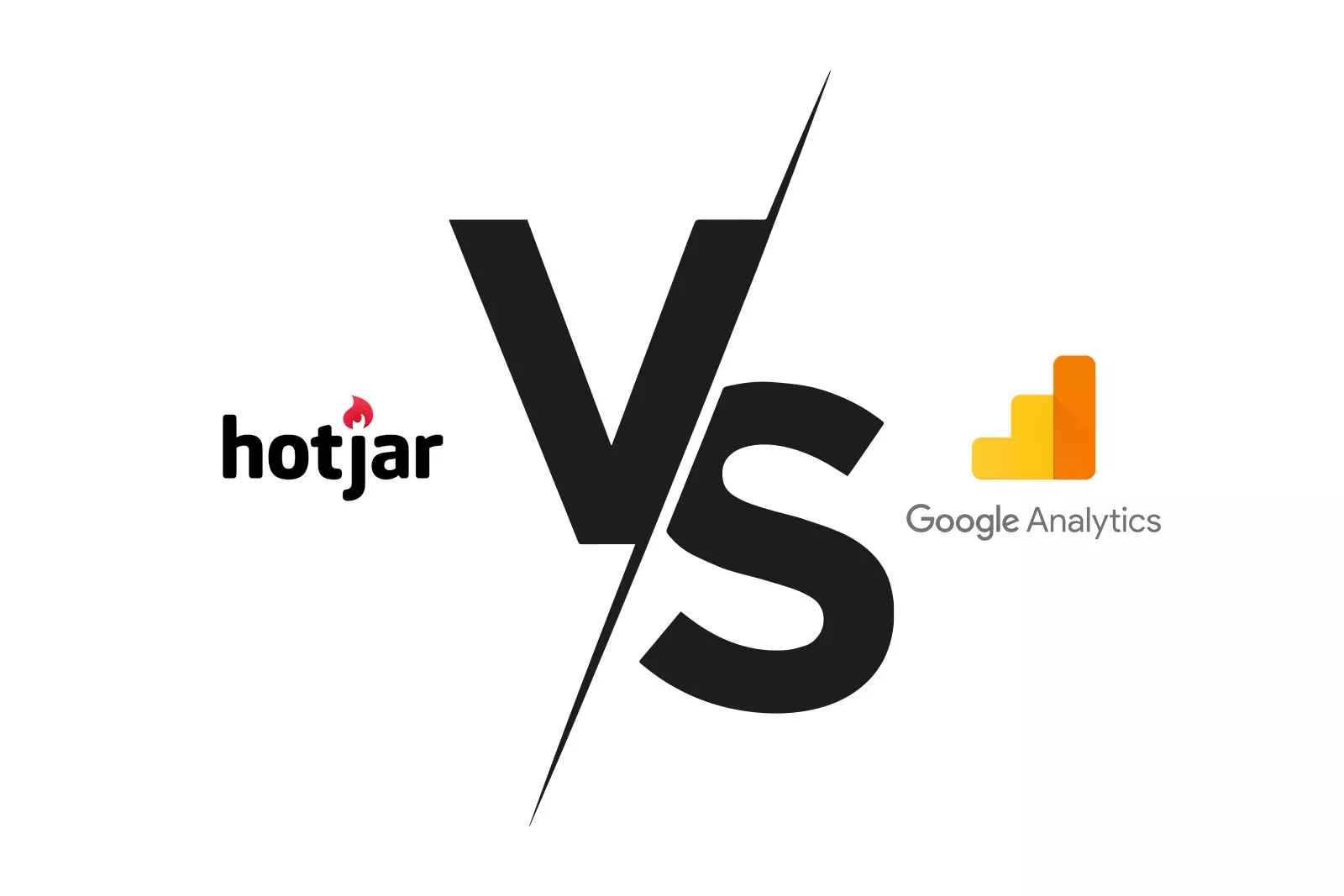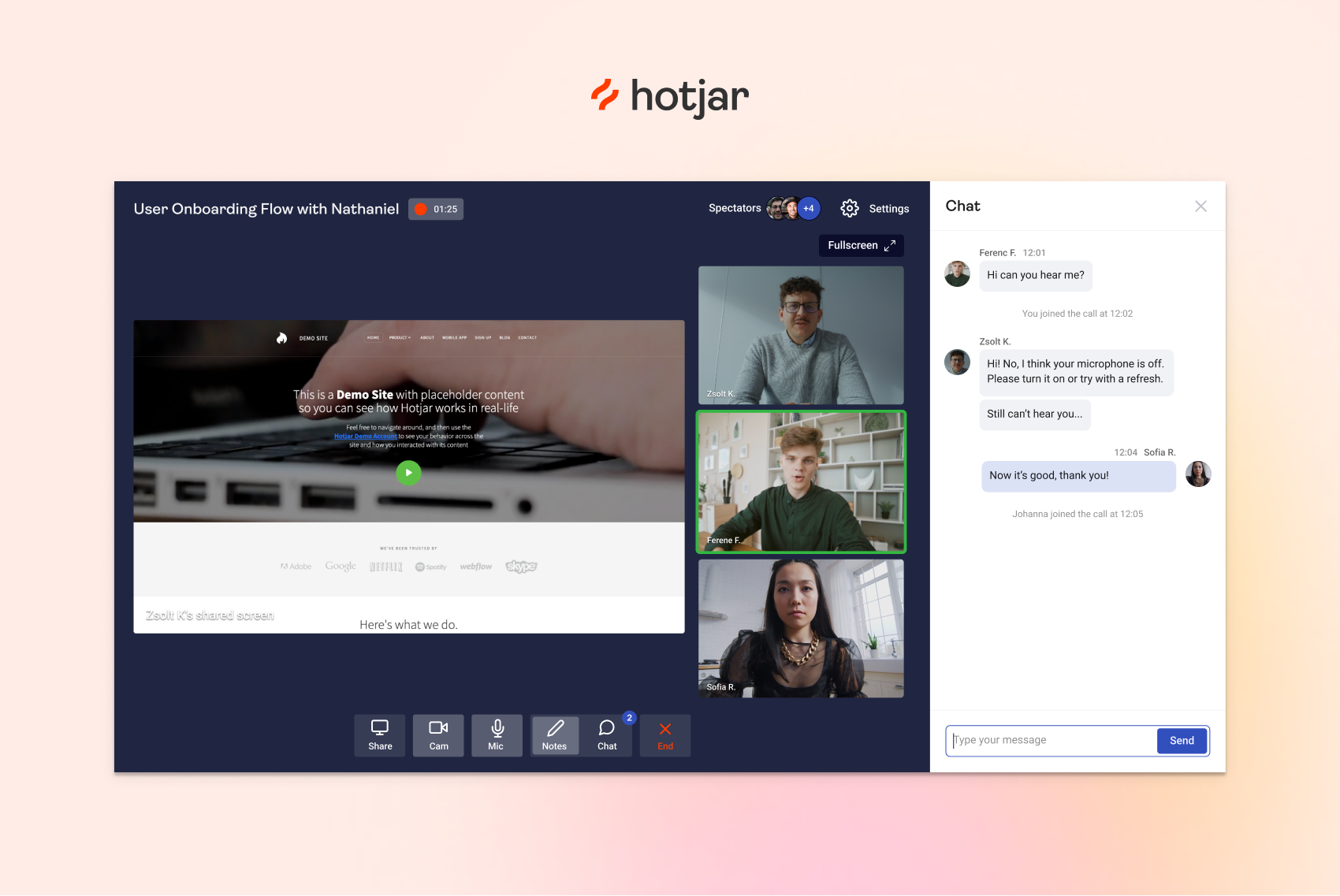As an online business owner, you must know how your users interact with your web app, landing page, website, or...
Conversion rate is one of the most critical metrics you need to track if you want to increase the profitability of your eCommerce business. It measures how many online shop visitors become paying customers.
By understanding the numbers behind conversion rates, you can make smarter decisions about your strategies to drive sales and customer engagement and the resources you need to support these strategies.
Optimizing conversion rates is critical, and it doesn’t have to cost much – 53% of companies spend less than 5% of their marketing budgets. However, your efforts need to be effective. Setting up conversion tracking can be challenging, especially if you lack resources or have limited knowledge of eCommerce data.
To overcome such issues, you can use conversion rate optimization (CRO) tools, such as FullSession. You can track marketing and sales funnels and UTM campaigns, watch recordings of user interactions, analyze interactive heatmaps and get customer feedback to identify issues preventing conversions.
Want to see FullSession in action? Sign up right now or schedule a demo!
If you want to learn more about conversion rates, read on! We’ll take you through every important detail.
Defining conversion rate
Conversion rate is the percentage of website visitors who complete a desired action, such as making a purchase or filling out a form. It is a commonly used metric in eCommerce to measure the effectiveness of marketing and sales efforts.
What are micro and macro conversions?
Micro conversions are small actions visitors take on a website that may not result in a sale but still indicate engagement or interest. Examples of micro conversions include:
- Signing up for a newsletter
- Adding an item to a wishlist
- Filling out a contact form
Macro conversions are the desired actions you want visitors to take on your website, such as making a purchase. Macro conversions are the ultimate goal for eCommerce businesses and the primary focus when measuring conversion rates.
Tracking micro and macro conversions can help you understand the entire customer journey and identify areas for improvement. You can learn how people interact with your website, what makes them more likely to buy the products you offer, and what drives them away.
To track micro and macro conversions, you can use web analytics tools like Google Analytics or behavior analytics tools like FullSession to understand the motivation behind user actions.
What is a good conversion rate for eCommerce businesses?

Image source: Pexels
Data from IRP Commerce shows that in November 2022, the average eCommerce conversion rate was 2,10% (decreased by 0,28% compared to 2021).
Generally speaking, the 2-3% range is the minimum value your business should strive for. Let’s discuss why you should be interested in tracking this metric.
Why are conversion rates important for eCommerce businesses?
The conversion rate lets you measure how effectively your online store converts visitors into paying customers. A higher conversion rate means users make purchases, leading to more sales and revenue.
It also helps you understand your customers’ behavior. You can learn how visitors engage with your website to eliminate the factors contributing to a low conversion rate, such as broken links, confusing navigation, poor content, and more.
Conversion data is also helpful for optimizing your marketing efforts – targeting ad campaigns, choosing the best communication channels, and similar. It allows you to make the most out of your budget.
Of course, conversion goals can differ depending on the circumstances. Let’s share some examples.
What are some common conversion goals in eCommerce?
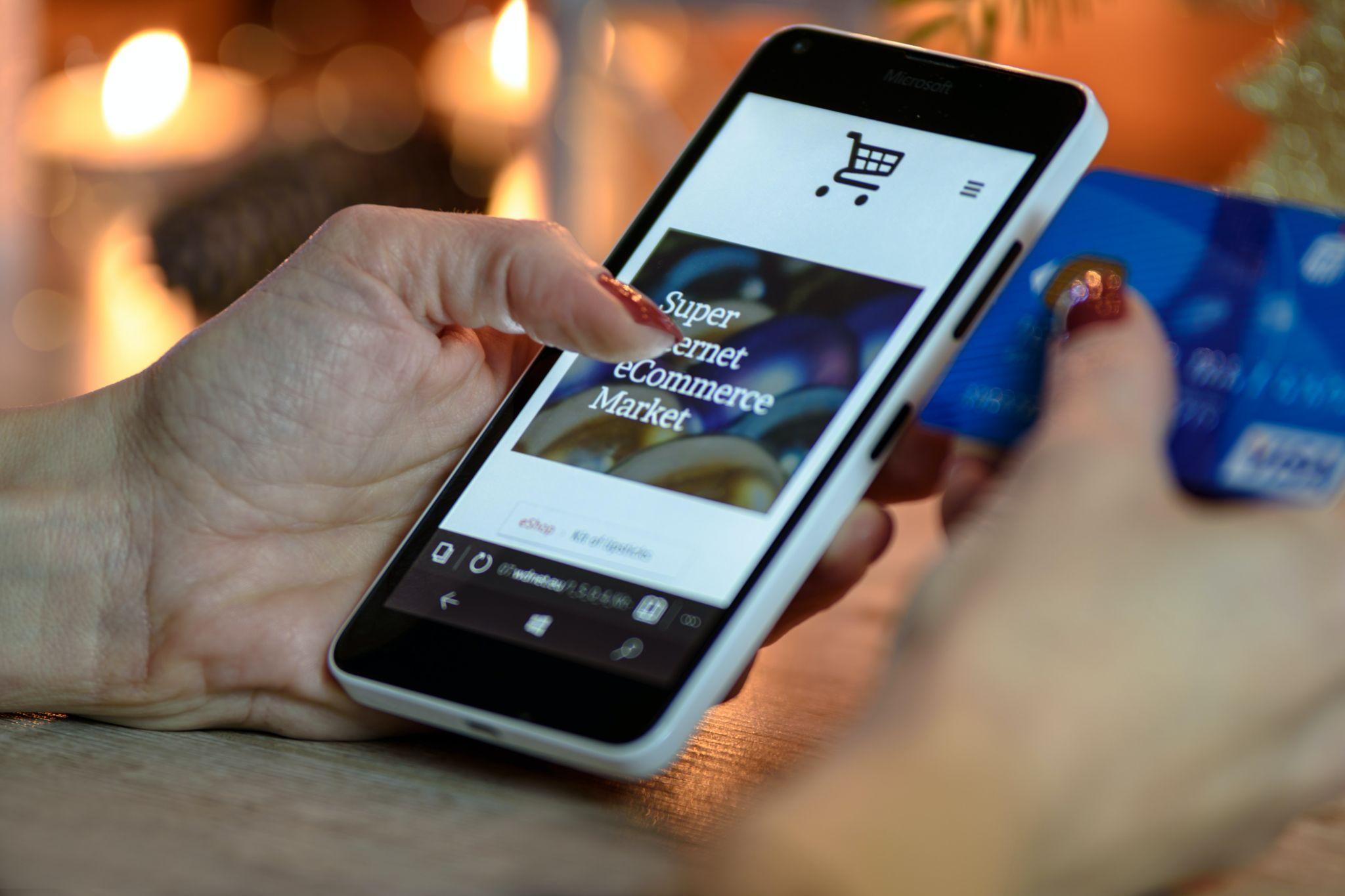
Image source: Pexels
Here are some common conversion goals eCommerce companies can define and track.
Completed purchases
Completed purchases are a crucial indicator of the success of an eCommerce business and are essential for long-term sustainability and growth. They represent revenue and are the primary way companies make money through online sales.
Adding items to the cart
Adding an item to the cart indicates interest and may lead to a sale in the future, even if the person didn’t finalize the transaction yet.
Signing up for a newsletter or email list
Newsletters and email lists help you stay in touch with your customers and promote new products. Tracking signups also lets you keep a finger on the size of your customer base.
Requesting more information
Sometimes, users require more information or want to contact the company for a consultation before purchasing items. Tracking this kind of interaction indicates interest in your products. It may also suggest that some important details are missing on the website.
Adding an item to a wishlist
Some companies also allow visitors to add items to a wishlist so they can purchase them later – when the product becomes available or is on sale, for example. It lets you see what products users are interested in and better understand their needs to optimize your online business.
Now that you know what conversion goals are worth tracking, let’s discuss how to calculate the conversion rate.
How to calculate the conversion rate for an eCommerce business

Image source: Pexels
Here are some critical steps for calculating conversion rate:
- Identify the specific action you want users to take, such as subscribing to a newsletter or making a purchase
- Gather data on the total number of visitors to your website
- Determine the number of visitors who completed the desired action
- Use the conversion rate formula to get results. Divide the number of conversions by the number of visitors and multiply the result by 100. It will show you the percentage of visitors who completed the desired action
You don’t have to calculate the conversion rate manually if you use an advanced UX analytics tool such as FullSession because it comes with a built-in conversion rate calculator. It saves you time and reduces the chance of human error.
Of course, while calculating the conversion rate is easy, keeping it high isn’t – many factors can affect it negatively. Let’s discuss some of them.
Seven factors that can affect your conversion rate
Here are some factors you should pay attention to if you want to optimize conversion rates and keep them at an optimal level.
Website design
A website that is visually appealing and easy to navigate will result in a better conversion rate. It makes finding what people look for and carrying out key actions easier. To learn more about website design, read our article on how to find and fix website issues.
Pricing
The price is a crucial factor affecting the product’s attractiveness, which also impacts the conversion rate. Unreasonably high price results in lower sales. However, a low price may indicate a low-quality product, which can decrease purchases just as quickly.
Product selection
A decently wide range of products in your offer can help improve the conversion rate because it allows you to attract different customer groups.
Customer service
Providing excellent customer service can help improve the conversion rate by building trust and confidence in the business. It could include having clear and accurate product descriptions, offering fast and reliable shipping, and having a responsive and helpful customer service team.
Marketing efforts
Choosing the proper marketing channels is also paramount and can impact the conversion rate positively. Don’t use broad messaging and confusing ads inconsistent with your company’s image. Instead, pay attention to keyword conversion rate, target your advertising and always try to say something relevant to your target audience.
User experience
Generally speaking, it’s always a good idea to ensure a good user experience on your website, as it’s one of the main factors that can boost or tank your conversion rate. Use a customer experience analysis tool such as FullSession and take care of load times, navigation structure, the quality of your content, and the clarity and effectiveness of calls to action.
These factors can help you identify areas for improvement and optimize your website to increase your conversion rate.
Tips for improving the conversion rate for eCommerce businesses
There are several things you can do to improve your company’s conversion rate. Let’s share some tips to get you started.
Optimize the online shop for mobile devices
In December 2022, mobile devices drove over 60% of worldwide traffic. If a website is not optimized for mobile devices, it can be difficult for customers to navigate and complete purchases on a small screen, leading to a lower conversion rate.
Create clear and compelling product descriptions and images
Well-written product descriptions and optimized images give potential customers the information they need to decide whether they want to add items to their cart. It makes buying products more accessible, which means it also boosts conversion rates.
Offer a seamless checkout process
The optimized checkout process helps ensure your customers can complete transactions efficiently and leaves a good impression on your users.
Test different elements of the website
Building a great user experience requires you to test various elements of your website, such as headlines, lead generation landing pages, calls to action, and content you use to engage users. Evaluate your UX and UI, and focus on elements that bring low results to make improvements and boost conversions.
Offer various payment options
Nowadays, people want to use various payment methods such as credit cards, PayPal, Apple Pay, or Google Pay. Offer your customers plenty of payment options – it’ll increase the chance they’ll finalize the transaction.
Use trust signals
Customers need to see that your brand is trustworthy and that products are well-liked and dependable. Trust signals – customer reviews, ratings, security badges, and guarantees are a way to achieve this goal.
Optimize your online shop for search engines
A great website is essential, but it won’t mean much if people can’t find it. Ensure good SEO (Search Engine Optimization) for your website and high-quality content to drive traffic from search engines.
Use retargeting ads
Retargeting helps you engage with potential customers who have already shown an interest in your brand by visiting your online shop or engaging with your content. You can show ads to such people, offering them targeted content that resonates with their needs and encouraging them to take action.
Implement live chat or chatbots
Consider implementing live chat or AI-powered chatbots to provide immediate assistance to visitors and answer any questions they may have. Removing any doubts regarding your products will increase conversions.
These are just some points you should focus on when optimizing your online store for conversions. For maximum results, we recommend you start using FullSession to understand how users interact with your site and see what issues they have which hinder your conversion rate.
Let’s discuss all the key features of our product analytics tool.
How to use FullSession for conversion rate optimization

FullSession is our behavioral analytics platform that helps you create a seamless digital customer experience. It provides you with in-depth product metrics you can use for various purposes – from customer churn analysis to form analysis.
Let’s explain how it works and how it boosts your eCommerce business.
1. Funnels and conversions

Funnel tracking involves setting up a series of steps customers must go through to purchase your products. FullSession helps you answer questions such as:
- How many visitors are starting the process of making a purchase?
- How many visitors are completing each step in the process?
- Which steps in the process are causing visitors to drop off?
- How long it takes for visitors to complete each step?
By tracking how many visitors complete each step in the funnel, you can identify areas where you lose visitors and optimize the website to increase the conversion rate.
2. Tracking UTM mediums, campaigns, and sources
You can also use FullSession to track UTM links. It allows you to evaluate the effectiveness of your marketing channels and traffic sources. You can then focus on what works best to boost the conversion rates. Our tool helps you track mediums, campaigns, and sources.
UTM mediums help you assess marketing channel conversion rate. You can identify the channels – like social media and organic search – most effective at driving traffic to your website.

UTM campaigns parameter helps you track campaign conversion rate, so you can allocate your budget properly.

UTM source allows you to identify articles, ads, and social media posts that drive traffic. For example, you can use this tag to evaluate the individual ad conversion rate.

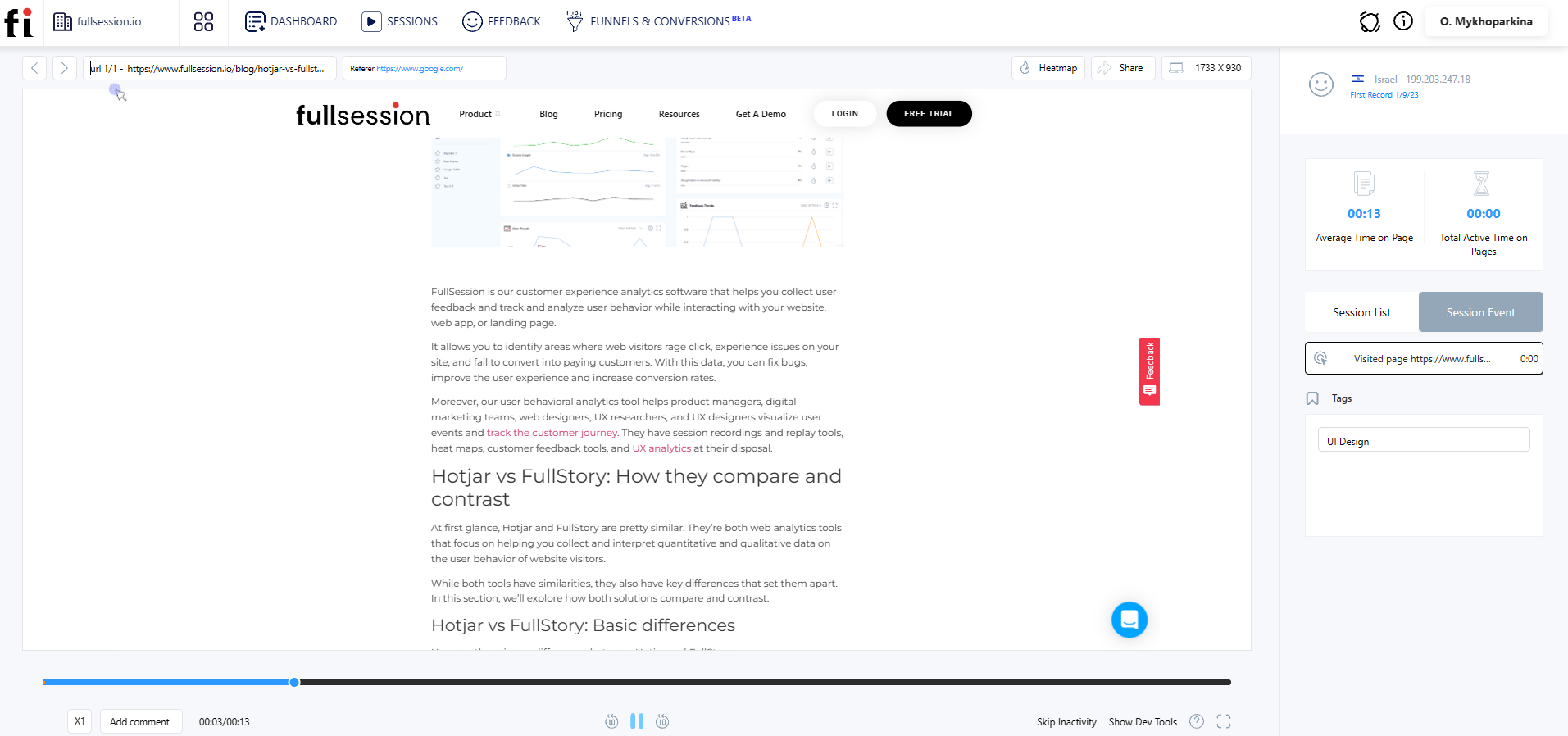
You can use session recording tools to find customer journey issues and fix problems that decrease your conversion rate. It includes recording mouse movements, clicks, scrolling, and interactions with forms or other elements on the page.
With FullSession, you don’t have to watch the entire session recording. You can rewind, fast-forward, pause and even skip periods of inactivity to save time and quickly share results with your team.
4. Interactive heatmaps
Interactive heatmaps use data collected by FullSession to show you a visual representation of how people interact with your website. These website heatmap tools provide insight into the user journey and experience, which means they are invaluable when you need to boost conversion rates. There are three types of interactive heat maps.
Click maps
Click tracking lets you see what page elements visitors are clicking on the site.
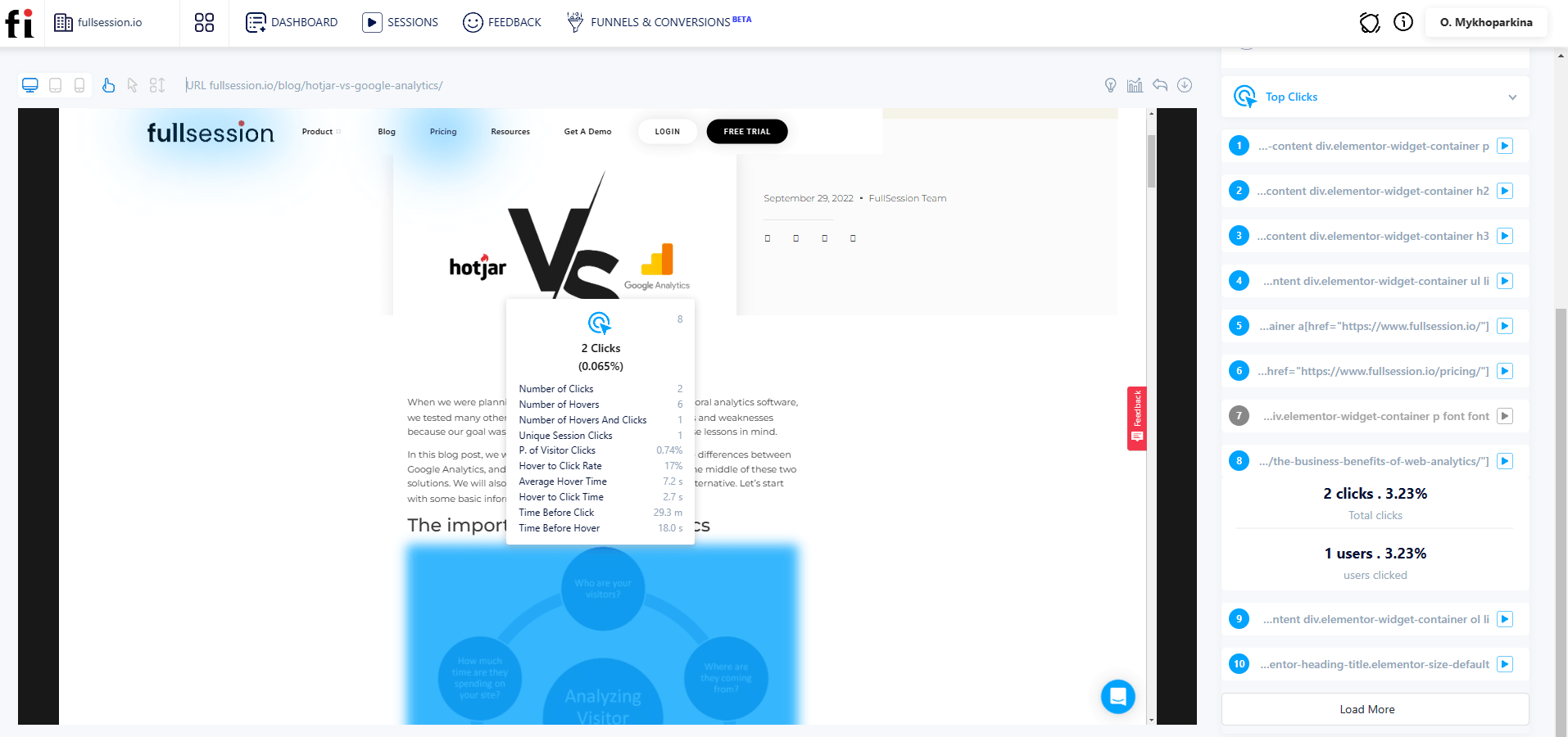
Movement maps
Movement maps show the mouse cursor’s movement on the page.
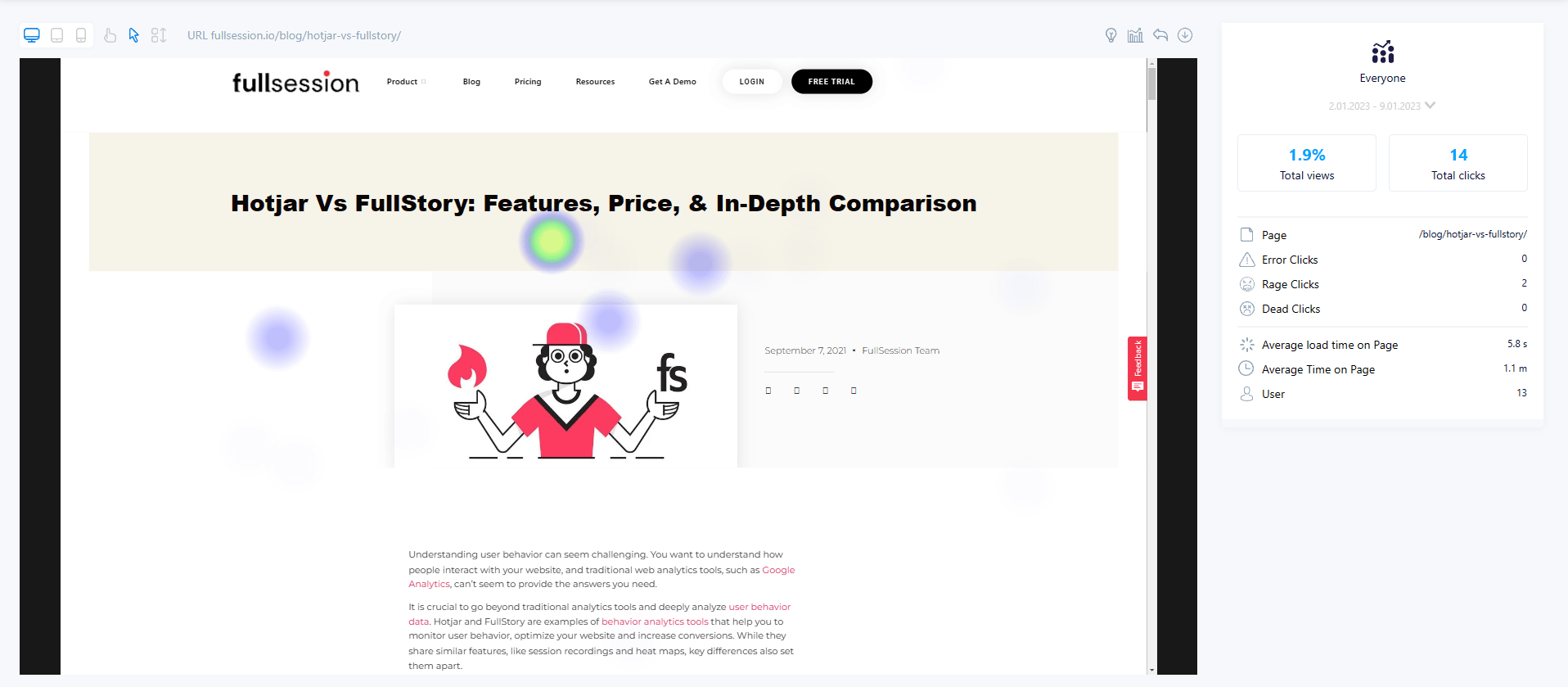
Scroll maps
Scroll maps show you how far visitors are scrolling down a page.
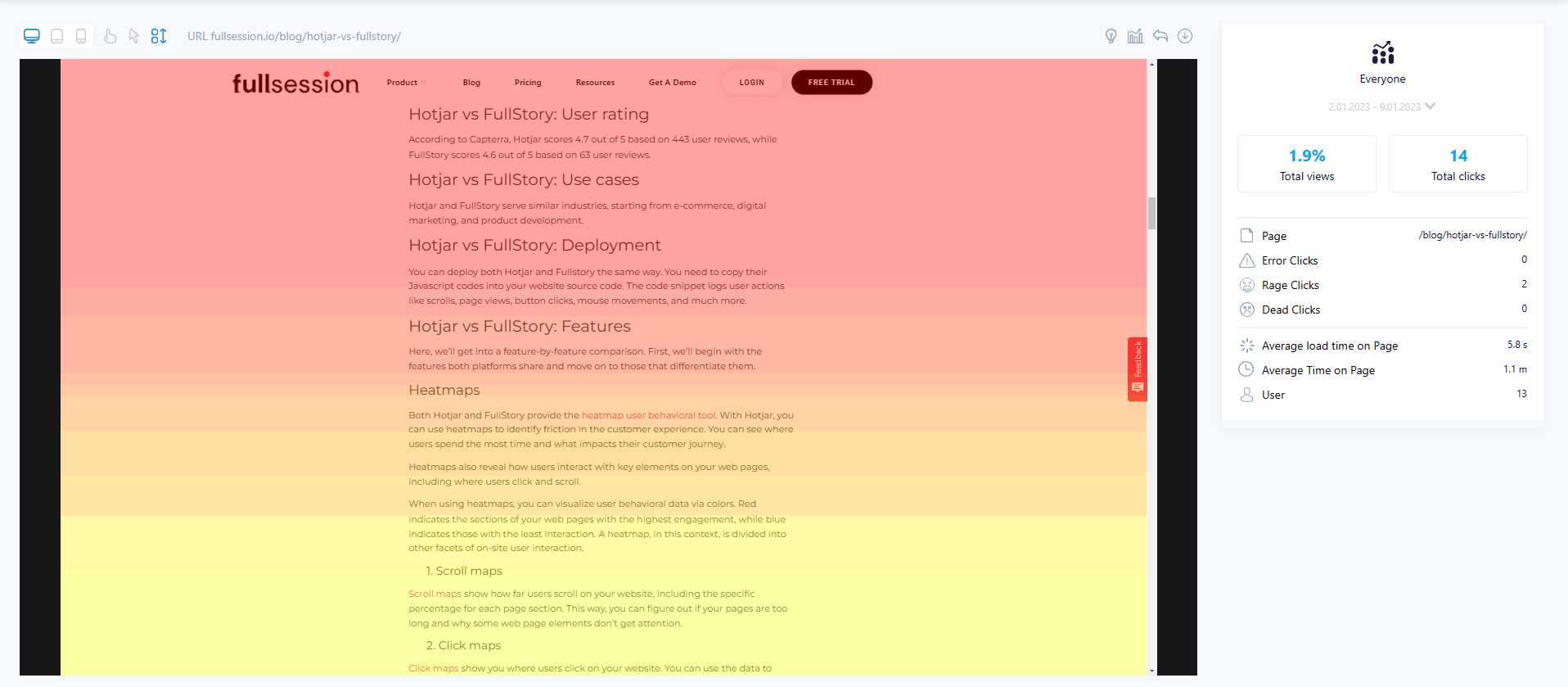
5. Customer feedback tools
Sometimes your users are the best information source. Customer feedback is essential, and FullSession helps you collect it.
Our platform isn’t full-scale NPS software, but it allows you to create customizable website feedback forms and place them on your online store to collect user feedback.
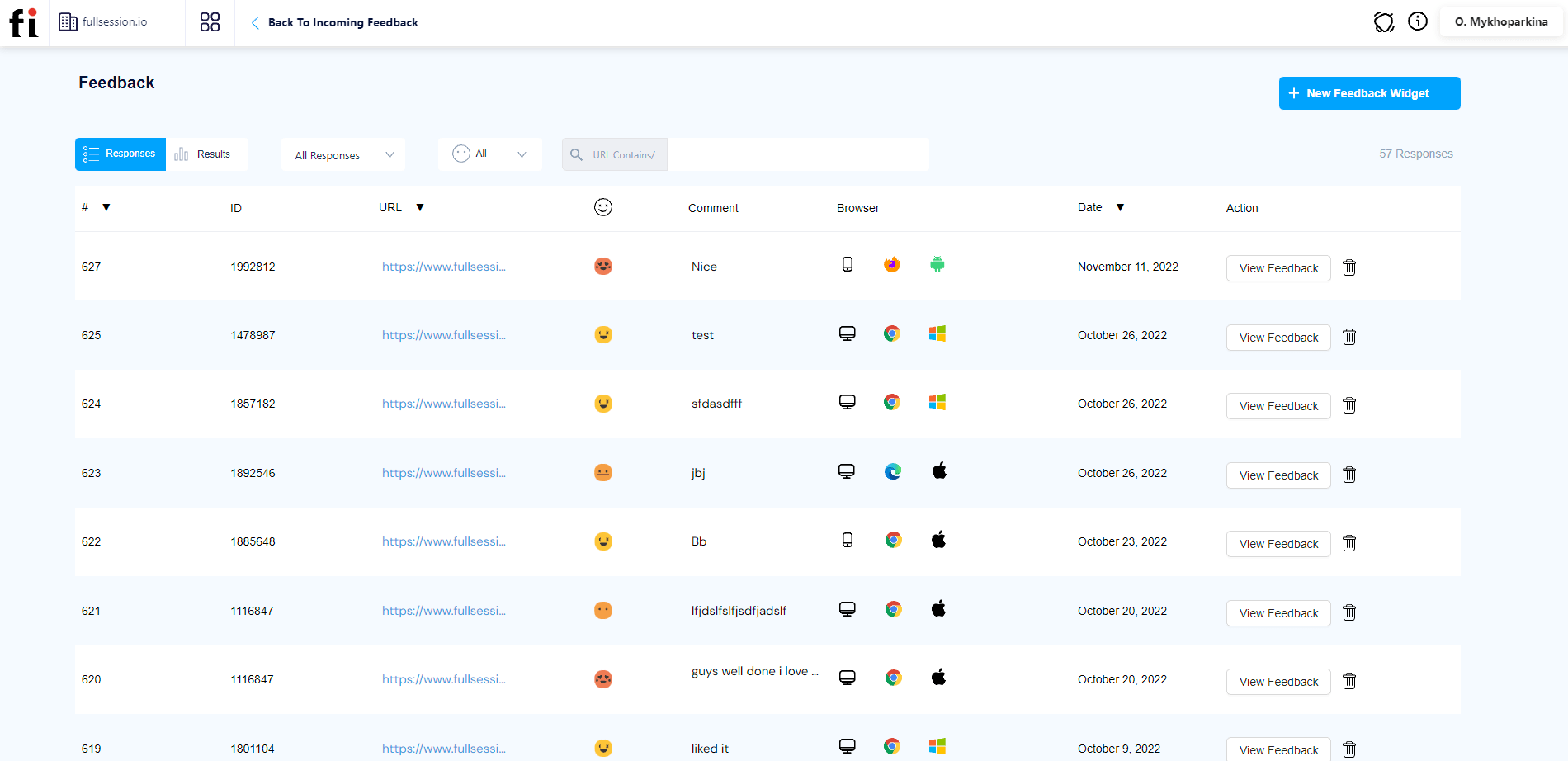
Our customer feedback tools help you gather feedback on various topics, such as the overall customer experience, the quality of products or services, and the website effectiveness.
Key takeaways on conversion rates for eCommerce businesses
Optimizing the conversion rate is critically important. It’s an ongoing process that requires continuous analysis, work, and proper software to collect data.
A platform like our FullSession lets you regularly track and analyze critical metrics to identify areas for improvement, make the necessary changes, get more conversions, and achieve better overall business results.
You can set up and track conversion funnels and UTM parameters. Thanks to customer feedback forms, interactive heatmaps, and session recordings, you can collect valuable user experience data to increase the conversion rate.
If interested in our product, you can start a free trial or schedule a demo to get more information.
FAQs on how to calculate conversion rate
Here are answers to some common questions regarding conversion rate calculation.
What does conversion rate mean?
Conversion rate measures how many potential customers visit your website and how many of them decide to take an action you consider crucial.
How do you calculate sales based on conversion rate?
Conversion rate calculation is simple. Multiply the total number of visitors by the conversion rate, then multiply that number by the average sale amount.
What is an example of a conversion rate?
If your conversion goal is subscribing to a newsletter, you have 10,000 website visitors, and 200 of them subscribe, your conversion rate is 2%.



